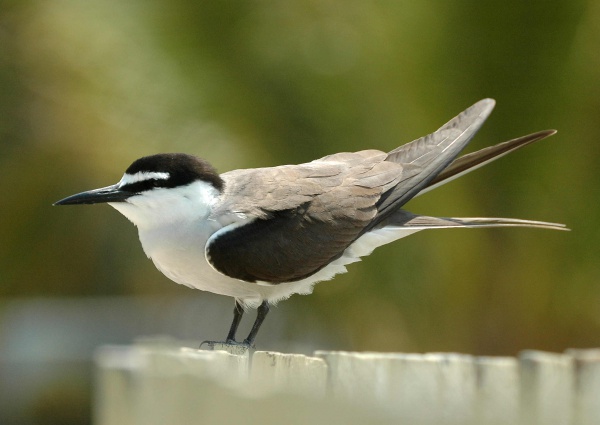Facts About Bridled tern
The bridled tern is a captivating seabird from the Laridae family, predominantly found in tropical oceans. Its scientific name has origins in Ancient Greek, with the genus name derived from "onux" (meaning "claw" or "nail") and "prion" (meaning "saw"). Fascinatingly, the species name "anaethetus" translates to "senseless" or "stupid."
This medium-sized tern measures approximately 30-32 cm in length and has a wingspan of 77-81 cm. It features dark grey upperparts and white underparts, complemented by black legs and a black bill. One of its distinguishing features includes white markings, such as a forehead, eyebrows, and a collar on the hindneck. Juvenile bridled terns are recognizable by their scaly grey upper bodies and pale underparts.
Bridled terns are migratory and tend to disperse extensively, spending winters across tropical oceans. They are more marine-oriented than many other terns. During the breeding season, they form colonies on rocky islands, where they lay a single egg in a ground scrape or hollow. Their feeding habits involve plunge-diving for fish, although they can also snatch food from the surface of the water. Courtship is quite the spectacle, with males presenting fish to females as part of their display.
Several subspecies of bridled terns exist, including O. a. melanopterus, O. a. antarcticus, O. a. anaethetus, and O. a. nelsoni, though the exact number of valid subspecies is sometimes debated. It's noteworthy that sightings of bridled terns in western Europe are exceptionally rare.
